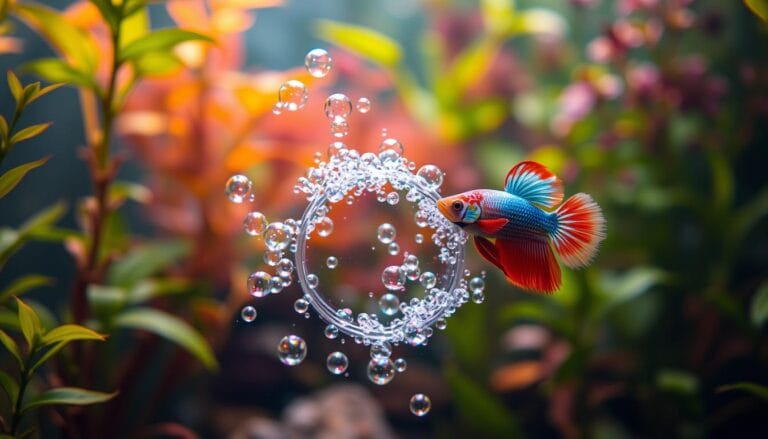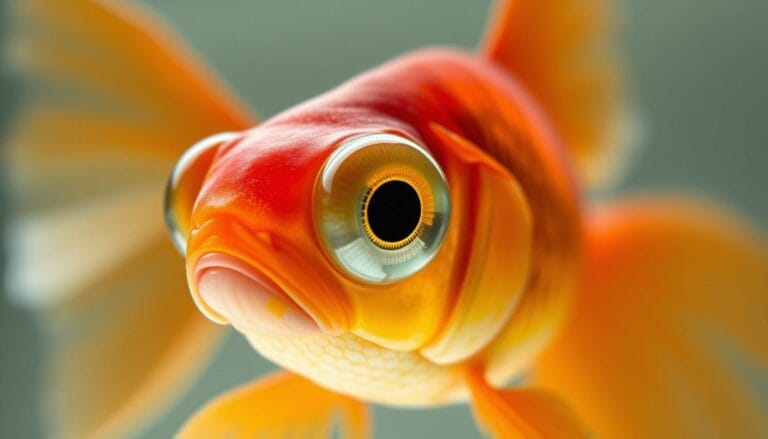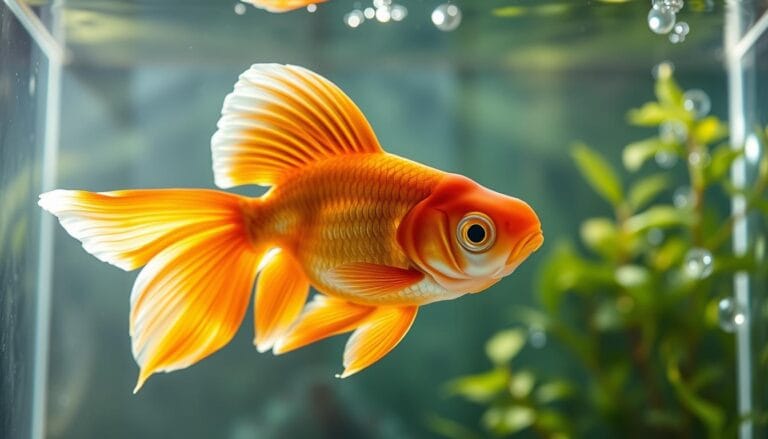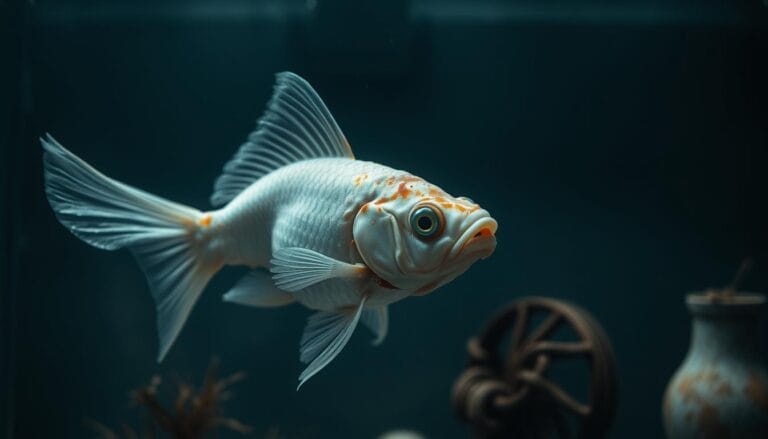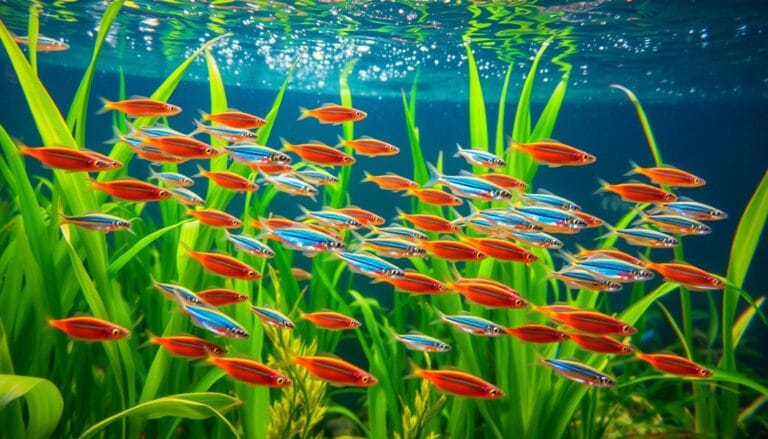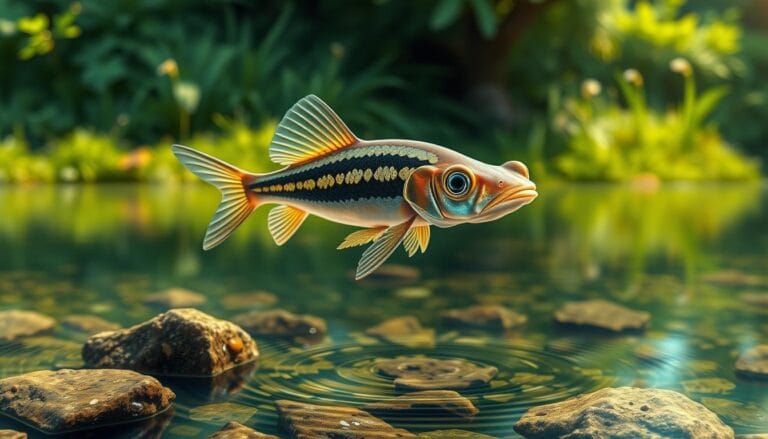Why platy fish Make the Perfect Friendly Aquarium pets
Thinking about your first aquarium pet? Platies, or platy fish, are a great choice for beginners. They have bright colors, are calm, and need little care. You can find them in pet stores for $2 to $4 each, based on species and color.
Table of Contents
Looking for a pet that’s easy to care for? Platies fish are perfect. They grow up to 2-3 inches and live 3-4 years in good conditions. But what makes them special, and how can you keep them happy and healthy?
Key Takeaways
- Platy fish are a popular choice for beginners due to their hardiness and ease of care.
- They can thrive in small tanks and tolerate a wide pH range from 6.8 to 8.5.
- Platies are relatively low maintenance, with a feeding frequency of once a day for adults and two to three small meals daily for juveniles.
- A suitable aquarium size for platies fish is between 10 to 20 gallons or larger.
- Female platies fish can give birth to 20 to 50 fry each month under ideal conditions, making them a great choice for breeders.
- Platies fish are compatible with similar-sized community fish, promoting peaceful cohabitation.
Understanding the Appeal of Platy Fish
Thinking about adding platy fish to your tank? It’s key to know their natural traits and behavior. They are colorful and calm, perfect for community tanks. They love being in groups and can live with other peaceful fish.
Platy fish can live up to 3-4 years and grow to 2-3 inches. Their ability to handle different water conditions is a big plus. They are most active during the day, adding to your tank’s charm.
Natural Characteristics and Behavior
Platy fish come from freshwater and are small and peaceful. They eat algae, crustaceans, insects, and plants. In the wild, they swim in groups for safety.
Social Nature and Personality Traits
Platy fish are very social and friendly. They are great for community tanks. With the right tank mates, they create a lively and colorful environment.
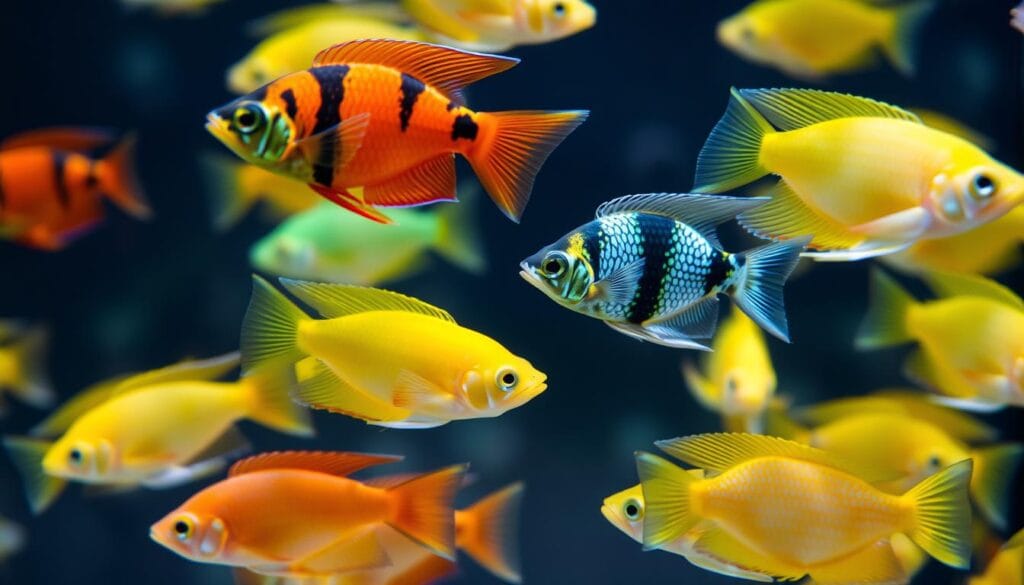
Lifespan and Growth Expectations
Platy fish can grow up to 2-3 inches. They live 3-4 years, depending on care and conditions. With the right care, they can be a beautiful addition to your tank.
Essential Tank Setup Requirements
Setting up a tank for types of platy fish requires careful planning. You need a tank that’s at least 10 gallons big. The water should be between 70-82°F. Make sure your tank has a heater, filter, and lots of hiding spots for your fish.
To make your platy fish happy, think about these things:
- Tank size: at least 10 gallons for the first fish, with an additional gallon per additional fish
- Water temperature: between 70-80 degrees Fahrenheit (21-27 degrees Celsius)
- pH level: between 7.0 and 8.0
- Water hardness: between 10-28 dGH
Keeping the water clean is key. Change 20-30% of the water weekly. This helps keep your types of platy fish healthy and happy.
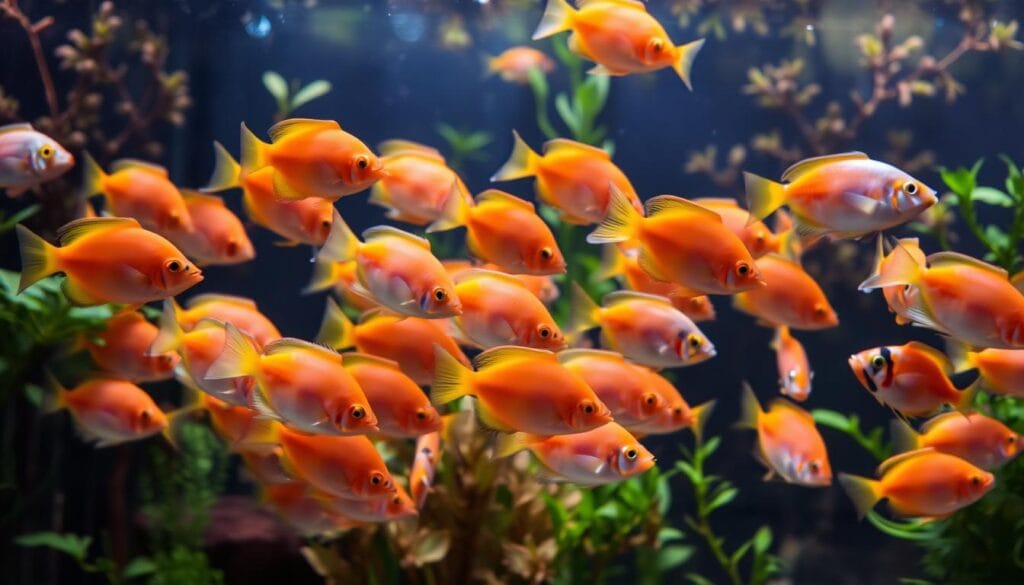
Different Types of Platy Fish for Your Aquarium
Platy fish come in many colors and patterns, making them a favorite among aquarium fans. You can find them in red, gold, blue, green, brown, and black. They are perfect for any community tank.
Some popular types include the Mickey Mouse platy, sunburst platy, and blue platy. These fish are not only beautiful but also easy to care for. They’re great for beginners. For something special, look for rare types like the bumblebee platy and green lantern platy.
Common Platy Varieties
- Mickey Mouse platy: known for its variegated pattern and popularity among enthusiasts
- Sunburst platy: features a vibrant, sunburst-like pattern
- Blue platy: a striking blue color that adds a pop of color to any tank

Rare and Exotic Platy Types
For a unique touch, consider rare and exotic platy fish. They add excitement to your tank. With the right care, your platy fish will be happy and entertaining.
Creating the Perfect Water Conditions
To keep your platy fish healthy, you need to create the right water conditions. The best water temperature for them is between 72°F and 82°F (22°C – 28°C). Also, the pH level should be between 7.0 and 8.0. You can keep this balance by changing 25% of the water every two weeks and checking the water often.
Platy fish like harder water. They do best in tanks of at least 10 gallons. It’s also good to have a ratio of 3 males to 1 female to avoid stress on the females. Here are some important things to remember for the perfect water conditions:
- Water temperature: 72°F – 82°F (22°C – 28°C)
- pH level: 7.0 – 8.0
- Water hardness: Harder water preferred
- Tank size: Minimum 10 gallons
By following these tips, you can make a great home for your platy fish. Always check the water and adjust it if needed to keep your fish happy and healthy.
Feeding and Nutrition Guidelines
Feeding your platy fish right is key. They love to eat algae and small plants. Give them a mix of high-quality flakes, pellets, and frozen foods every day.
Daily Feeding Schedule
Adult platies need food once a day. Young ones and fry should get 2-3 meals. Make sure they eat all their food in under a minute to keep the water clean.
Best Food Types for Platies
Feed them a good staple food 4-5 times a week. Add fruits and veggies 2-3 times a week. Brine shrimp, daphnia, and bloodworms are great protein sources. Give them fresh bananas once or twice a week.
Supplemental Nutrition Options
Platies fish also love live or frozen brine shrimp. They’re full of nutrients. Pregnant platies might need more food because they’re working hard.
By following these tips, your platy-fish will be happy and healthy.
Tank Mates and Community Setup
Choosing the right tank mates for types of platy fish is key. Platies fish are peaceful and do well with other calm fish. Good choices include small tetras, cory catfish, and snails.
To keep your tank happy, make sure the temperature platy-fish is right. Aim for 72-82°F (22-28°C) and pH of 6.8-8.5. Here’s how to set up a great community tank:
- Keep a group of three to six platies fish, with a ratio of at least two females for every one male.
- Choose tank mates that are compatible with platies, such as small tetras, cory catfish, and snails.
- Maintain optimal water conditions, including temperature and pH, to ensure the health and well-being of your platy-fish and their tank mates.
By following these tips, you can create a thriving community tank with types of platy-fish. Enjoy the beauty and diversity of a well-planned aquarium.
Breeding Platy-Fish Successfully
When breeding platy-fish, several factors are important. With over 40 platy fish types and many platy varieties, picking the right one can be tough. It’s key to know what your fish need and give them the best environment.
A good tank for breeding platy-fish should be at least 29 gallons. The water should be between 70-77 °F. Platies like a pH of 6.8 to 8.5, making them easy to care for. It’s important to have a male-to-female ratio of 1:3 to avoid fights.
Keeping your platy-fish healthy means a good diet and care. Adults eat once a day, while young ones need 2-3 meals a day. With the right care, platy-fish can have up to 50 babies a month. By understanding their needs, you can enjoy breeding these beautiful platy fish types and platy varieties.
Some important things to remember when breeding platy-fish include:
- Keeping the aquarium clean and well-oxygenated
- Feeding them a balanced diet
- Ensuring the water is right and not too cold
- Having the right number of males to females
By following these tips and caring for your platy-fish, you can have successful breeding. Enjoy the joy of raising these stunning and varied fish.
Common Health Issues and Prevention
As a platy-fish owner, knowing about common health issues is key. Regular checks and proper care can stop many problems. Issues like diseases, parasites, and stress are common in platies.
To avoid these, keep the water clean, feed them right, and watch for illness signs. Quarantining new platy-fish for 2-4 weeks can spot health problems early.
Signs of illness in platies include:
- Excessive hiding
- Lack of appetite
- Gasping for air
- Erratic swimming
- Visible lesions or colored spots
Early detection and treatment can help your platy-fish get better. Good water, a balanced diet, and regular checks keep them healthy and happy.
Maintenance Schedule and Routine Care
To keep your platy-fish healthy, you need a regular care plan. This includes daily tasks like feeding and watching the fish. You also need to do weekly tasks like changing water and cleaning the tank. Knowing the specific needs of your platy varieties is key.
Changing 10-20% of the water weekly helps keep it clean. Also, watching your fish every day can spot problems early. Cleaning the glass weekly stops algae and keeps things looking good.
Do a full water test every month to check for important levels. Following this care plan helps your platy-fish stay healthy, no matter the platy fish types or platy varieties you have.
Decorating Your Platy-Fish Aquarium
Decorating your platy-fish aquarium offers many options. You can use plants, rocks, and driftwood to make it look like their natural home. Live plants like Java moss and anacharis are great. They help keep the water clean and give your fish a natural snack.
You can also add fun decorations like treasure chests or sunken ships. Just make sure they’re safe for your fish. Some cool ideas include:
- Adding a variety of plants, such as Java moss, anacharis, and hornwort
- Creating a rocky cave system using rocks and driftwood
- Adding a treasure chest or other ornament to create a fun and engaging environment
Choose decorations that are safe for your fish. With a bit of creativity, you can make a special place for your platies to live.
Troubleshooting Common Platy-Fish Challenges
As a platy-fish owner, you might face several challenges. These can impact your fish’s health and happiness. Identifying the cause and fixing the problem is key. Behavior issues often stem from small tanks, bad water, or the wrong tankmates.
Water quality problems are another common issue. They can come from too much food, bad filters, or neglect. To fix this, adjust the temperature platy-fish to 70°F to 80°F. Also, check water quality and change it regularly. Knowing the types of platy fish and their needs helps too.
Platy-fish can get sick with ich, fin rot, and velvet. Keeping water quality high and feeding right is key. Also, reduce stress. Treating these diseases with meds or water changes can help. Being proactive keeps your fish healthy and happy.
Behavior Problems and Solutions
- Monitor tank size and population to prevent overcrowding
- Provide compatible tankmates to reduce aggression
- Adjust water parameters to meet the needs of your platy-fish
Water Quality Issues
- Regularly test water parameters to identify possible issues
- Perform regular water changes to keep water quality good
- Adjust the temperature platy-fish to the ideal range
Conclusion: Starting Your Platy-Fish Journey
Starting your journey with platy-fish is exciting. These colorful and hardy fish are great for any aquarium. They are peaceful, fun to watch, and come in many colors.
To start well, set up a good tank. Make sure the water is right, choose the right tank mates, and feed them well. This will help your platies thrive and make your home more beautiful.
Whether you love the classic look of common platies or the rare ones, your journey will be memorable. Dive in, be creative, and create a stunning underwater world. It will be a place where platy-fish beauty shines.
FAQ
Are platy-fish a good choice for beginner aquarium owners?
Yes, platy-fish are perfect for beginners. They do well in small tanks and are easy to care for. They’re also popular and easy to find in pet stores.
How long can platy-fish live and how big do they grow?
With the right care, platy-fish can live 3-4 years. They grow to about 2-3 inches long.
What are the key characteristics of platy-fish?
Platy-fish are colorful and calm. They like to be in groups and can live with other peaceful fish.
What tank size and water conditions do platy-fish require?
Platies need a 10-gallon tank and water between 70-82°F. They also need a heater, filter, and hiding spots.
What are the different types of platy-fish available?
There are many types of platy fish. Some common ones are Mickey Mouse, sunburst, and blue platies. Rare ones include bumblebee and green lantern platies.
What are the ideal water conditions for platy-fish?
Platies like water between 70-82°F and a pH of 6.8-8.5. Keeping the water clean is also key.
What should I feed my platy-fish?
Feed platies a mix of flakes, pellets, and frozen foods daily. Adding live or frozen brine shrimp is also good.
What are some good tank mates for platy-fish?
Good tank mates for platies are small tetras, cory catfish, and snails. Avoid aggressive or fin-nipping fish.
How can I breed platy-fish successfully?
Breeding platies is rewarding but needs careful planning. You’ll need to identify males and females, set up a breeding tank, and provide the right conditions. With proper care, the fry will grow and thrive.
What are some common health issues that affect platy-fish?
Platies can get diseases and parasites. Keeping the water clean, feeding them right, and watching for illness is important.
How do I maintain my platy-fish aquarium?
To keep platies healthy, follow a regular care schedule. This includes daily feeding and monitoring, weekly water changes, and monthly deep cleaning.
How can I decorate my platy-fish aquarium?
Decorating your aquarium is fun. Use plants, rocks, and driftwood to create a unique space. Live plants like Java moss and anacharis are great for water quality and food.
How can I troubleshoot common challenges with my platy-fish?
Platies can face challenges like behavior problems and water issues. Identifying and fixing the cause is key. Adjusting the water, diet, or treating for disease can help.


